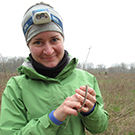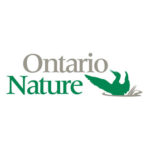Wabigoon Forest (FSC), Nabish Wetlands © Brittney Vezina
As public concern over the local weather and biodiversity crises grows, so too does public demand for extra environmentally pleasant merchandise. Typically merchandise that firms declare to be environmentally pleasant come about via voluntary certification methods that enable producers so as to add a emblem showcasing sustainable practices. In a sea of sustainability claims and logos, it’s vital to ask what the assorted certification methods require in observe.
That can assist you perceive forestry certifications, we’re highlighting some key variations between two logos you’ve seemingly seen on varied wooden and paper merchandise bought in Ontario – “FSC” (Forest Stewardship Council) and “SFI” (Sustainable Forestry Initiative).
Background
Each FSC and SFI are voluntary certification methods that encourage sustainable forest administration practices via their very own requirements, which have particular social, environmental and financial necessities.

FSC was began in 1994 by a gaggle of environmental organizations, and is now an worldwide system utilized in 93 international locations. FSC Canada’s membership-based group is constructed round 4 chambers: environmental, social, financial and Indigenous. Ontario Nature has been a long-standing member of the environmental chamber. SFI was additionally based in 1994, by the American Forest & Paper Affiliation. It’s a home system throughout Canada and america with a governance system decided by board management.
A number of forestry firms throughout Ontario maintain both FSC or SFI certifications, some maintain each, and a few don’t maintain any voluntary certifications. As soon as a forest has been licensed, third-party auditors monitor compliance with the respective requirements via annual audits. These annual audits are along with provincially mandated audits for all firms training industrial forestry on public land to make sure firms adjust to provincial forestry rules.
Necessities
At a excessive stage, FSC and SFI’s requirements share many overlapping themes and language – striving to acknowledge and respect Indigenous rights, and protect areas of excessive conservation worth, together with areas of ecological, cultural or religious significance.
Nonetheless, the place SFI’s normal necessities are obscure and extra generalized, FSC’s normal necessities are extra detailed and sometimes embody measurable indicators for auditors to evaluate a forestry firm’s efforts in opposition to.

Defending environmental values:
- Each requirements define that firms shall shield areas of excessive environmental worth, however solely the FSC normal describes precisely how an organization needs to be doing this – detailing steps for figuring out and setting apart a minimal of 10% of the forests they handle from industrial logging. In the meantime the SFI normal requires no minimal quantity of safety for such values and solely requires a program for shielding environmental values, with no particular necessities or particulars on how to take action.
Endangered species:
- The FSC normal requires firms working inside the vary of boreal woodland caribou to go above and past provincial rules and tips for this species. Whereas the SFI normal has a requirement for a program for shielding endangered species, it doesn’t require any species-specific applications nor particulars on what such a program ought to seem like.
Indigenous rights:
Scientific analysis:
- Each FSC and SFI name for using the very best accessible information and science, however SFI takes it a step additional by together with a bit for investing into forestry analysis, science, and expertise. SFI additionally incorporates monetary or in-kind help for analysis and information switch initiatives to construct cooperation and deal with native problems with relevance (e.g., local weather adaptation, water high quality, ecosystem providers or different biodiversity matters). However SFI’s normal doesn’t require firms to take a position a specified quantity.

The Huge Image
Whereas voluntary certification methods may be vastly helpful, why do such certification methods even have to exist within the first place? The foundations and processes for forest administration set by the province’s legal guidelines and insurance policies ought to guarantee forests are managed sustainably and in ways in which respect Indigenous rights. Whether or not the province and business live as much as that is debatable.
No matter certification system, Ontario Nature will proceed our efforts advocating for environmentally sound forestry practices that uphold Indigenous rights throughout the province.
To be taught extra about Ontario Nature’s work, go to our webpages on sustainable forestry and protected locations.
Authors

Ontario Nature Protected Locations Coordinator. Ontario Nature Brittney began as a volunteer with Ontario Nature in 2018, engaged on the Ontario Reptile and Amphibian Atlas. She holds a B.Sc. in zoology from the College of Guelph and an M.Sc. in conservation biology from the College of Kent. Brittney has a powerful curiosity within the human dimensions of conservation and believes conservation success is rooted in schooling, science and dealing collaboratively with neighborhood members.

Alexander joined Ontario Nature in July 2024, coming aboard because the Protected Locations Intern to help the group in its work with the Forestry Stewardship Council. He accomplished his bachelor’s diploma in political science at Wilfrid Laurier College in 2020, adopted by his grasp’s diploma in worldwide public coverage on the Balsillie Faculty of Worldwide Affairs in 2021. Beforehand, his expertise in editorial help and coverage analysis has allowed him to work on the United Nations in New York Metropolis, in addition to the Pan American Improvement Basis in Washington, DC. Outdoors of labor, Alexander enjoys cooking, studying, and writing.















